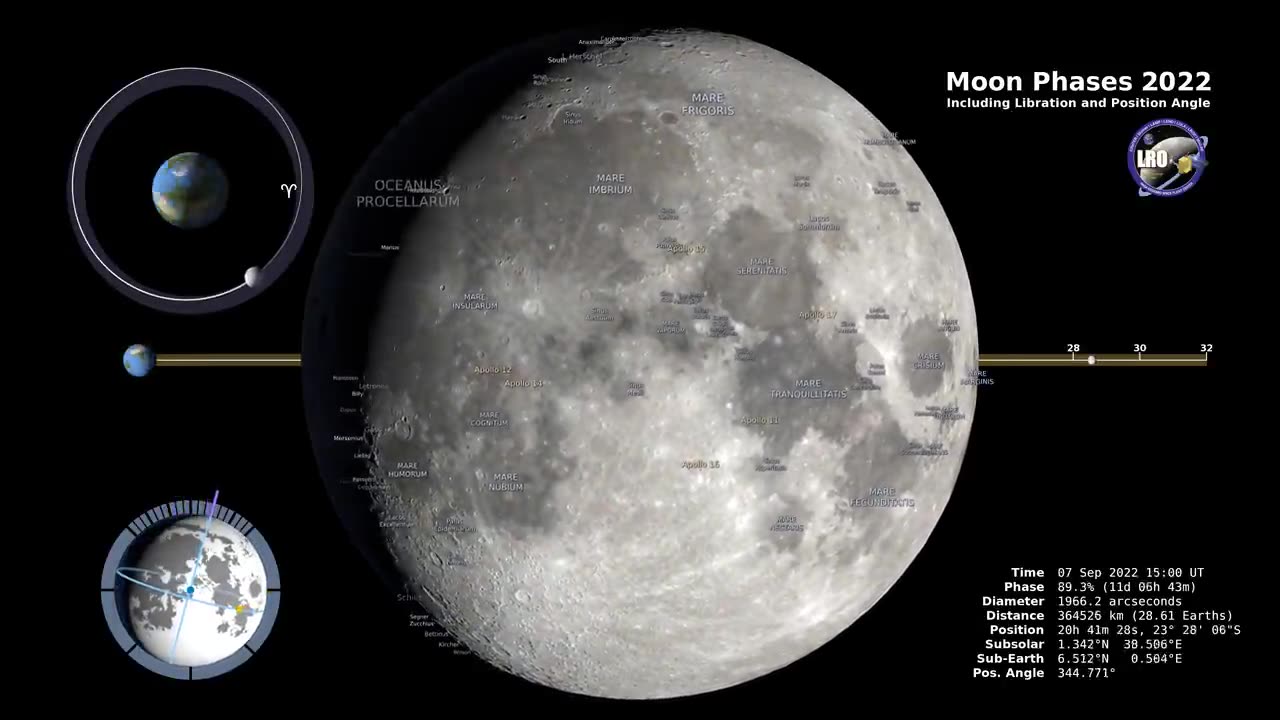Premium Only Content

Moon Phases 2022 – Northern Hemisphere – 4K
In the Northern Hemisphere, the moon goes through eight distinct phases during its 29.5-day lunar cycle:
New Moon: The moon is positioned between the Earth and the Sun. The side of the moon illuminated by the Sun is facing away from Earth, making the moon appear dark.
Waxing Crescent: A small sliver of the moon becomes visible as it starts to move away from the Sun. This phase occurs shortly after the New Moon.
First Quarter (Waxing Half Moon): Half of the moon's face that is visible from Earth is illuminated by the Sun. This phase occurs around a week after the New Moon.
Waxing Gibbous: More than half, but not all, of the moon is illuminated. It continues to grow in brightness as it moves toward the Full Moon.
Full Moon: The moon is positioned opposite the Sun, with its entire face illuminated as seen from Earth. It's the brightest phase and occurs about two weeks after the New Moon.
Waning Gibbous: The moon starts to decrease in illumination as it moves away from the Full Moon.
Third Quarter (Waning Half Moon): Half of the moon's face that is visible from Earth is still illuminated, but the illumination is decreasing.
Waning Crescent: A diminishing sliver of the moon is visible as it moves closer to the New Moon phase.
These phases repeat in a cyclical manner, driven by the moon's orbit around the Earth and the relative positions of the Earth, moon, and Sun.
If you're interested in specific moon phase dates and times for 2022, I recommend using a reliable astronomical resource or calendar tool that can provide accurate and up-to-date information for your location.
Regenerate
-
 LIVE
LIVE
saiyagamertv
6 hours agoIm ready to RUMBLE lets WIN!!
51 watching -
 LIVE
LIVE
DimeFS
9 hours agoLOST RIFT FIRST PLAY
56 watching -
 2:58:37
2:58:37
RaiderYT
2 days agoCall of Duty Mobile
5.33K -
 3:52:09
3:52:09
The BOB & TOM Show
23 hours agoThe Bob and Tom Show June 11, 2025
7.96K1 -
 4:21:19
4:21:19
Steven Crowder
17 hours agoLIVE: LA Riots Coverage | Boots on the Ground!
690K557 -
 1:30:50
1:30:50
The Sage Steele Show
21 hours agoShannon Bream | The Sage Steele Show
12.7K2 -
 4:01:36
4:01:36
FreshandFit
7 hours agoAfter Hours w/ Zherka
160K74 -
 2:20:58
2:20:58
Badlands Media
14 hours agoDevolution Power Hour Ep. 362: Game Theory, Traps, and Trump’s Calculated Chaos
232K21 -
 2:23:18
2:23:18
Inverted World Live
8 hours agoAlien Caskets in Antarctica | Ep. 57
58.5K10 -
 2:32:50
2:32:50
TimcastIRL
9 hours agoTrump To Deploy ICE Tactical Units Across US As LA Riots WORSEN, HUNDREDS Arrested | Timcast IRL
151K113